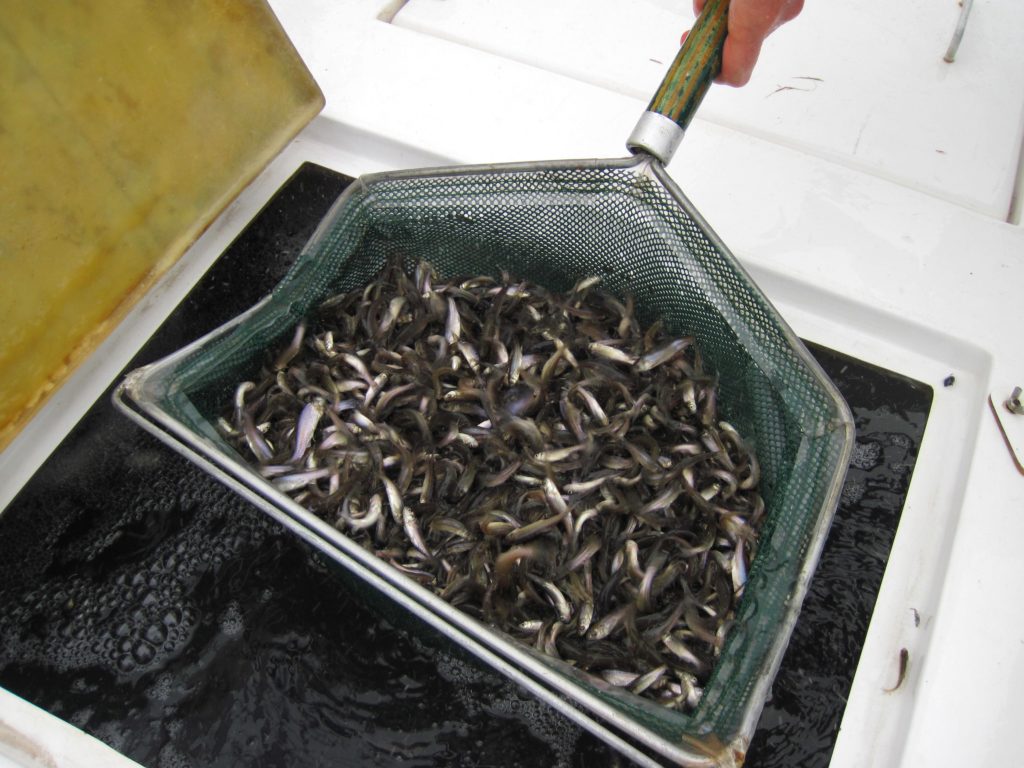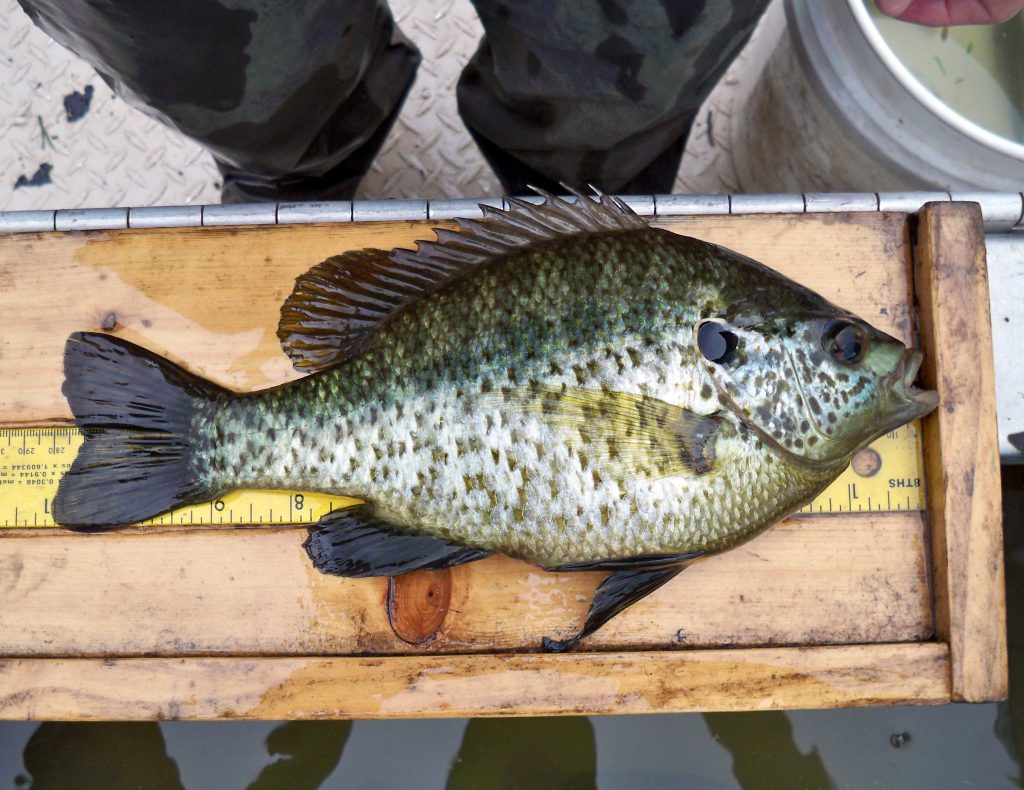

Spring Fish Stocking: Bluegill, Fathead Minnows, Redear and Shad
Even though it’s still winter, professional fisheries biologists are thinking ahead. Following the long cold spells across the country, our fisheries will need some loving care come spring!
Responsible fish stocking strategies are implemented with a client’s long-term fisheries goals in mind – the most important of which is a healthy and balanced fishery. Lakes and ponds with big goals can benefit greatly from the introduction of desirable forage fish. Unfortunately, forage fish are easily depleted, particularly in small ponds, so annual stocking is recommended to sustain their long-term benefits. The appropriate number of forage fish to stock varies from property to property, but a Professional Fisheries Biologist can work with you to evaluate your goals and determine what works best for your fishery.

Stocking Bluegill
Bluegill serve as excellent forage fish in both growing and well-established fisheries. Bluegill grow to 6-10 inches and begin spawning when water temperature reaches 70°F, making it critical to complete stocking early in the spring. In addition to serving as a staple food source for Largemouth Bass populations, Bluegill help keep the water column clean by feeding on a variety of small organisms, including mosquito larvae.

Stocking Fathead Minnows
Likewise, Fathead Minnows are outstanding forage and sources of mosquito control. At three inches in length, adult minnows thrive in turbid, low-oxygenated waterbodies and spawn along the shoreline where mosquitoes often lay their eggs. Fathead Minnows are a proven method to eliminate mosquito larvae from ponds. They also feed on algae and other organic materials in the water column.

Stocking Redear Sunfish
Another beneficial fish species in any fishery is the Redear Sunfish. Redear are known for their unique diets and are sometimes referred to as shellcrackers due to their affinity for snails, small clams, and other mollusks. They are often selected for stocking because their natural diet can help limit parasites that drain the health of other fish. Parasites like “yellow grub” and “black spot” begin their lifecycle in mollusks and then move up the food chain to infect fish—and eventually, the birds that eat them. Redear Sunfish are able to consume these parasites without becoming infected themselves, improving the overall health and longevity of the surrounding aquatic ecosystem. Redear are also great additions to a fishery because their specialized diet does not compete with most other fish and they provide additional fishing opportunities.

Stocking Shad
Finally, as a result of the fickle winter weather, it’s likely that Shad populations were hit the hardest. Shad have early maturation rates, allowing them to sustain populations year over year. However, they are very sensitive to changes in temperature and dissolved oxygen levels, and die off when water temperatures dip below 43 degrees. When this occurs, restocking is highly recommended. Shad feed on plankton in open water and are slower swimmers, making them readily available and vital prey for Largemouth Bass, catfish, and other sport fish. Shad stocking is not legal in every state, so it’s important to check local and state regulations.

Develop A Fisheries Management Plan
A responsible stocking strategy will exercise proper acclimation of fish to ensure the highest odds of success. Temperature control is imperative during fish transport, as well as before stocking if the difference in water temperature exceeds the tolerance of the species. A professional fisheries management company will ensure fish are obtained by quality hatcheries and work with you to develop a fishery that aligns with your personal budget and long-term goals.
Alongside any stocking strategy, it’s important to develop a management plan that encourages a healthy, thriving fishery. With the changing of seasons, fish kills become a greater possibility. The installation of an aeration system can help circulate a lake or pond, introduce dissolved oxygen, and prevent stratification of the water column, which can cause a massive fish kill in just hours with the right conditions. Floating fountains and submersed diffused aeration systems are suitable options for any waterbody, and can even be introduced using solar power if an electrical outlet is not available nearby.
In addition to aeration, property owners can improve the long-term success of their recently-stocked fisheries by conducting regular water quality tests, practicing supplemental feeding using high-quality fish feed, and managing fish habitat through the introduction of natural and artificial cover. Contact your Fisheries Biologist to design a spring stocking plan that meets your budget and exceeds your expectations.
The Benefits of a Fisheries Management Plan
Contact Us to Stock Your Fishery
SOLitude Lake Management is a nationwide environmental firm committed to providing sustainable solutions that improve water quality, enhance beauty, preserve natural resources and reduce our environmental footprint. SOLitude’s team of aquatic resource management professionals specializes in the development and execution of customized lake, pond, wetland and fisheries management programs that include water quality testing and restoration, nutrient remediation, algae and aquatic weed control, installation and maintenance of fountains and aeration systems, bathymetry, shoreline erosion restoration, mechanical harvesting and hydro-raking, lake vegetation studies, biological assessments, habitat evaluations, and invasive species management. Services and educational resources are available to clients nationwide, including homeowners associations, multi-family and apartment communities, golf courses, commercial developments, ranches, private landowners, reservoirs, recreational and public lakes, municipalities, drinking water authorities, parks, and state and federal agencies. SOLitude Lake Management is a proud member of the Rentokil Steritech family of companies in North America.









